The Best Deals on Camping, Backpacking and Outdoor Gear [May 2025]
Get the best deals on flights, rental cars, and hotels for this destination.
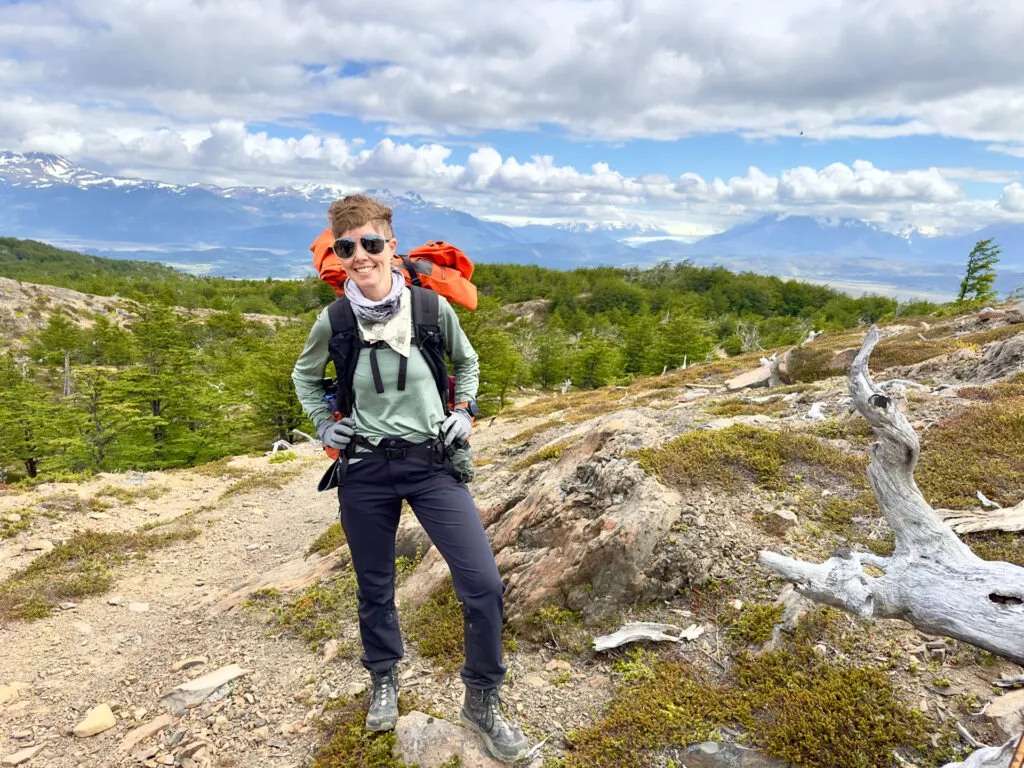
When I joined the outdoor brand Fjällräven for their Classic USA in Colorado last summer, I had no reason to believe I’d get the chance to do it again at any of their other 7 Classic events around the world. But when they announced a brand new 4-day backpacking route in Patagonia in Chile, I was thrilled to do it all again, this time in such a remarkable trekking destination. It was certainly different than the USA Classic, but one thing that remained the same: it’s a great event whether you’ve been backpacking for years or you’ve never been backpacking before ever.
Think you might want to check out a Fjällräven Classic yourself? Here’s what I learned from backpacking with 200 of my closest friends. Twice.
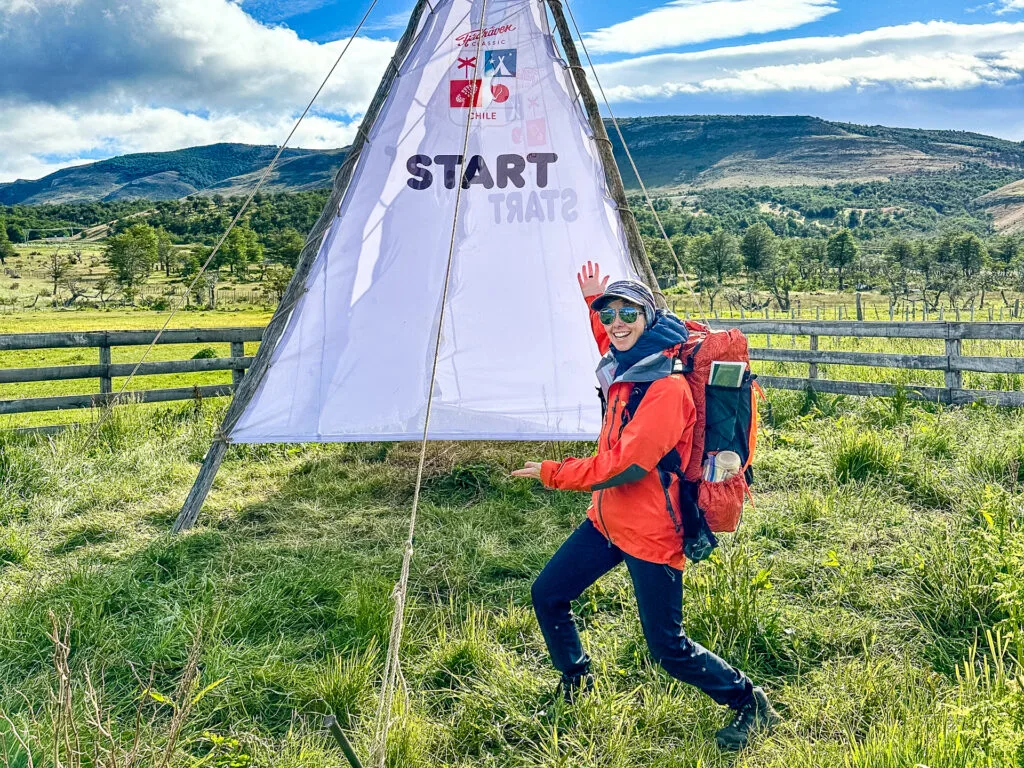
What the Heck is the Fjällräven Classic?
If you’re not familiar with this series of events (which isn’t surprising as I’ve come across few people who are), allow me to explain. Fjällräven Classics are supported backpacking events that involve several days of hiking in the wilderness. I say “supported” because they aren’t exactly guided, per se. On the contrary, there are no guides. But there is a designated and well-marked route, maps galore, check-in stations every day (usually with snacks), a team of volunteers to offer aid and advice if you need it, and designated group campsites every night where everyone camps together over a large area.
You sign up for Classics in advance, get a passport that gets stamped at every checkpoint, you’re provided with backpacking meals and stove fuel before you start, and are offered the chance to buy Fjällräven gear (naturally). There’s a designated start and finish line, organized camping before and after the event at a big canvas gathering tent they call Trekker’s Inn (this varies depending on Classic location), and even help coordinating transportation or shuttles on some one-way routes.
You pay to attend, but it’s far less than you would pay for a guided backpacking trip. But you’re still provided with information, the planning is basically taken care of for you, you’re given packing lists and told what to expect, and you are surrounded by the safety and company of lots of other hikers. Lots. Depending on the event, you could be in a group of 200 or, in the case of the original and most popular Sweden Classic, 2,000.
You do need to register, and spots are competitive and limited, so sign up to get an alert when it’s time to claim a spot HERE.
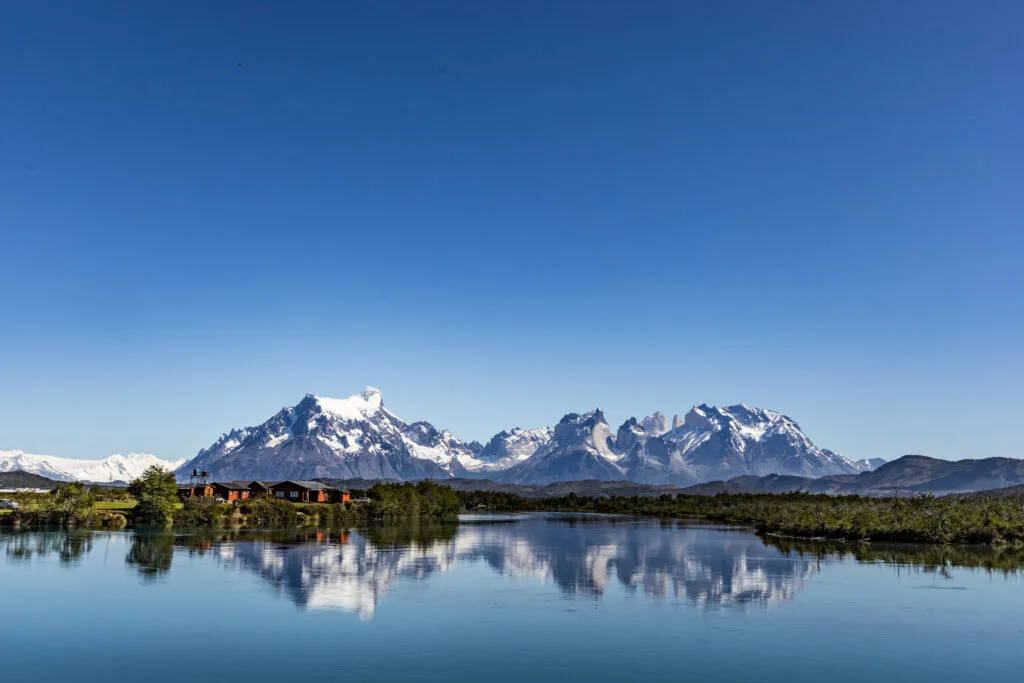
Where is the Fjällräven Classic?
Classics don’t just take place in Sweden, the U.S. and Chile, though. There are 7 total, including in Denmark, Korea, the U.K. and Germany, plus a Polar event that involves adventuring in the Arctic with sled dogs (which is not trekking, so we don’t count it, lol).
When is the Fjällräven Classic?
Classics take place throughout the year with each one being scheduled generally in the same time frame each year. USA takes place in the summer while Chile happens in early December and so forth. Generally they occur in whatever season makes the most sense for the destination in question and offers the most enjoyable experience. To see which Classics happen when, check out Fjällräven’s Classic website.
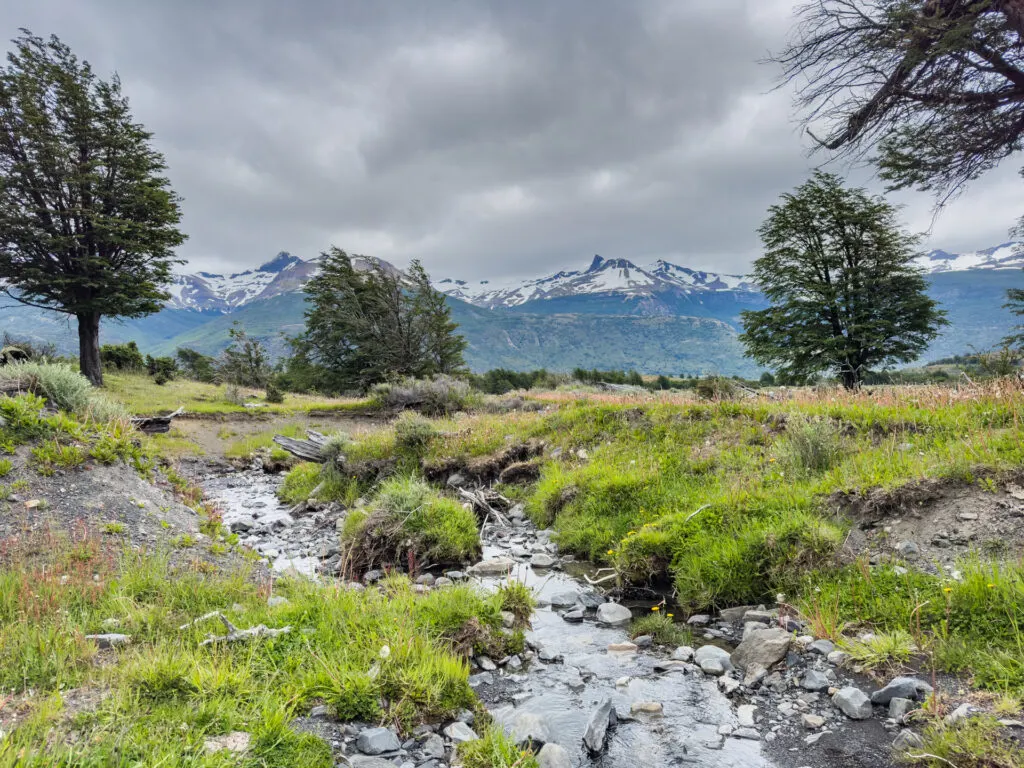
Yeah, but What’s the Fjällräven Classic LIKE? It’s HARD.
Every Classic event will be different (at least USA and Chile were), including the types of landscapes you’ll experience. You can read about the USA Classic here, but I’ll focus on Chile in this article. SO let me start by saying this 4-day, 47-mile (72km) route is NOT for the faint of heart. It was hard. There were a million and a half steeps ascents and descents on a trail clearly built by people who have never heard of a switchback. As soon as you went up, you’d go right back down again, after which you’d go right back up. It was an exhausting onslaught of never ending challenges.
Fortunately, the views eased some of the sting. Often, you’d crest a hill or go around a ridge and breathtaking views of mountain or glacial lakes would suddenly appear. Snow-capped peaks and the towers of Torres del Paine National Park would peak through clouds on a clear day. There were opportunities to refresh your body and soul via plunges in cold lakes. The diversity of trees and wildflowers was mesmerizing and watching it change from day to day was a treat.
Unfortunately, I had a cold for most of this hike, so it was rendered even more difficult because I was so congested, my throat hurt, and there was so much snot running out of my nose non-stop that the entire trail is littered with my DNA in the form of snot rockets launched every three and a half minutes. So that put a bit of a damper on things, but if nothing else, it was a reminder that I can absolutely do hard things, which is a reward in itself.
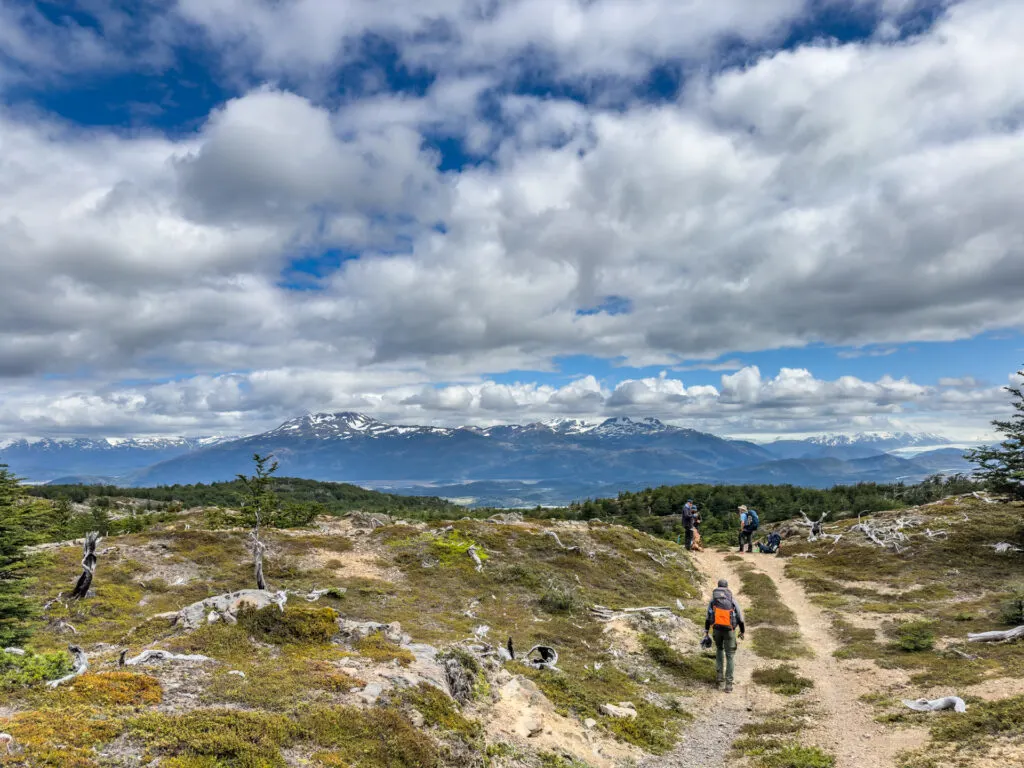
And because I feel this need reiterated: this route is hard. And not gonna lie, there are several sections many of us agreed were a slog, and those weren’t the tough ups and downs. On the contrary, it was often the long sections of flat where the scenery didn’t change much for several kilometers if not several miles and, what’s worse, they always seemed to overlap with the last few miles before camp when you were the most tired and ready to quit.
Yes, I know, 10-12 miles a day may not seem like that much to some of you. Heck, I’ve done 19- and 22-mile days more than once. And the USA Classic was about the same daily milage (but only 3 days). But consider this me drilling into your brain just how challenging this route is that it felt almost as hard as much longer stretches of trail.
And let me tell you, every checkpoint I saw somehow became more beautiful than the last (it might have something to do with my increasing exhaustion). When I saw those blue tents and the checkpoint marker (usually placed near the day’s halfway point then again at camp), I practically ran to get my trail passport stamped before throwing my pack on the ground and stretching out in the grass for lunch or a nap.
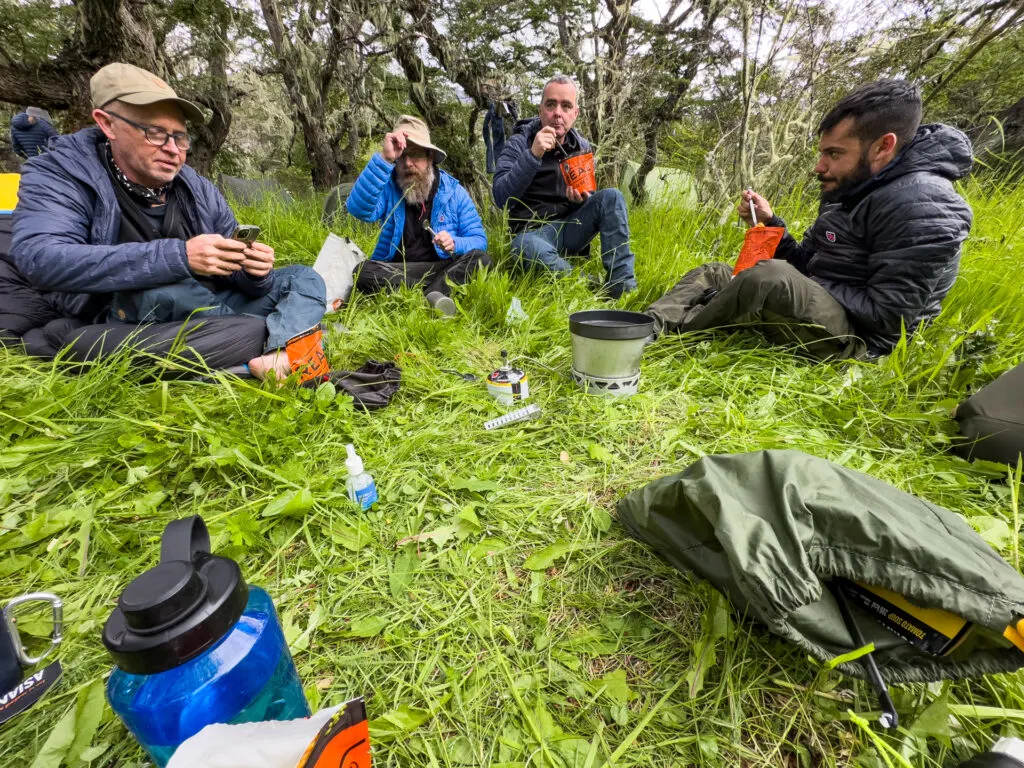
Food
Fortunately, checkpoints were often made even more exciting simply because most had instant coffee and maté and some kind of treat like empanadas, sopapillas, or energy bars, a welcome treat after a long stretch of hiking. BUT! You should definitely bring your own trail snacks because you’ll need plenty more calories in between checkpoints to keep you going. So stock up on your favorites before you arrive or try something new that you find around Puerto Natales (where check-in takes place before the event).
That said, you will be provided with breakfasts, lunches and dinners in the form of dehydrated backpacking meals when you check in for the trek. Pretty good ones, actually. And yes, there were vegan and gluten free options. Pretty good ones, actually. But if you’re super picky, you might want to bring a couple of your own. You’ll also be provided with stove fuel, just bring your own backpacking stove. FYI: One large canister was more than enough for two people for four days, so share one and cut your weight.
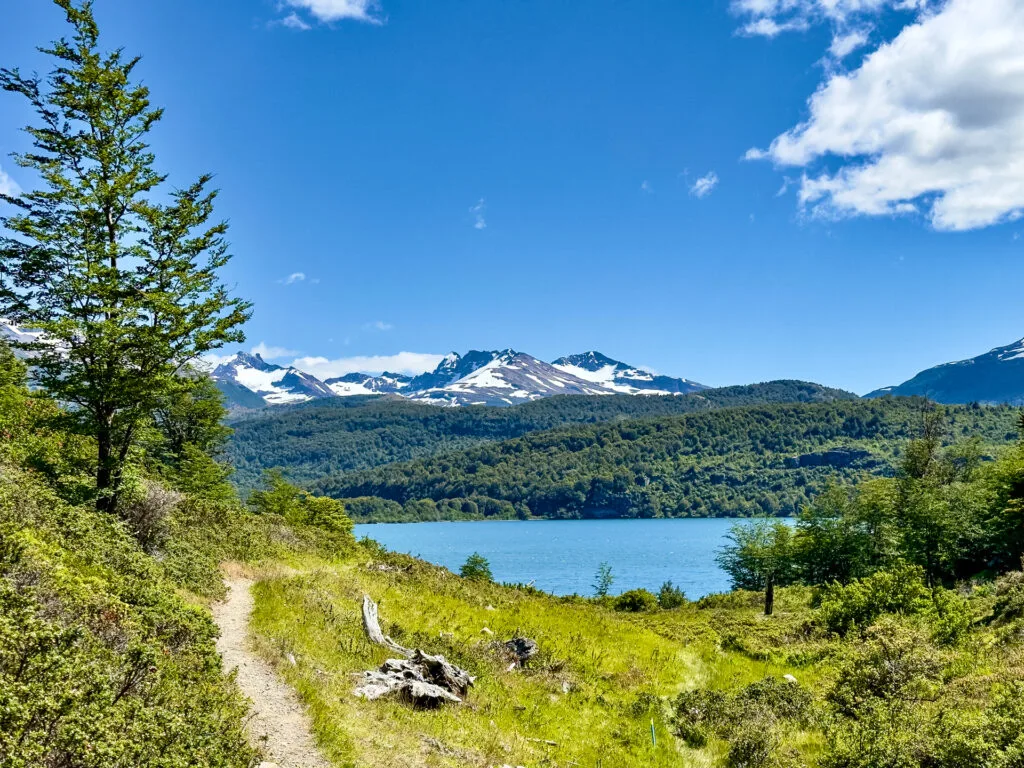
Weather
Keep in mind that weather is fairly unpredictable in Patagonia. We were practically guaranteed there would be rain (which, miraculously, there wasn’t during my whole trek). But you may have gloomy or wet weather and little to no shade if the sun does come out (which it blessedly did one whole day). Speaking of, that warm, sunny day almost took more out of me and my companions than cold, windy ones. And there were plenty of cold, windy ones. So bring clothing for every type of weather.
Most of the trek, though, I was constantly taking jackets off and putting them back on again, either my lightweight puffy or my shell. I’d crest a hill and get pummeled by cool wind and suddenly feel uncomfortably chilled, then descend into a Vally or behind a ridge and the wind would disappear and I’d take it right back off again. Not everyone did this; I dare say most hikers are larger than me, so their bodies retain heat and insulate better than mine does, but I watched plenty of folks layer and de-layer often along the way. I did wear gloves for most of the hike, even if I was just in light sun shirt. My hands were often chilled when the rest of me was more or less comfortable while hiking.
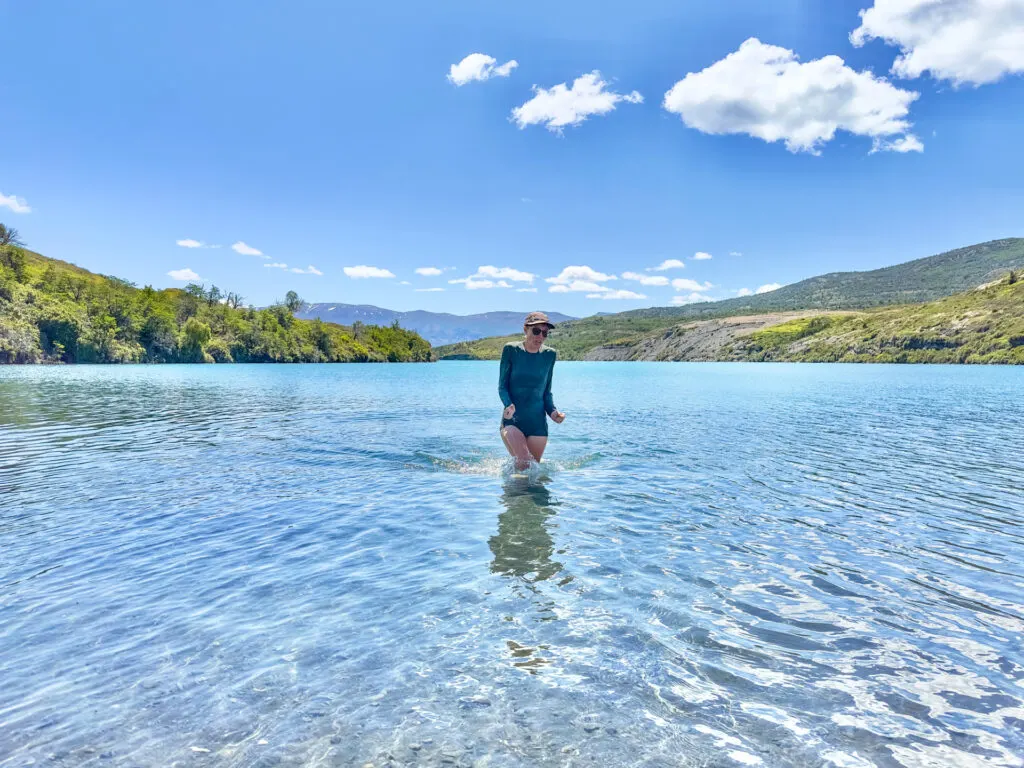
Polar Plunges
On warmer days, you may be keen to take a quick dip in one of the many cold lakes you pass. Several nights’ campsites were next to a lake and we passed (blessedly) Lago Del Toro on the second to last day when it was brutally sunny and warm and I dare dare more folks than not were stripping down to their skivvies or changing into swimwear to jump in or take a very quick swim (it was cold!). I did, too, if only to see if it would help my congestion and relieve my heat exhaustion after a long morning hike. It did. Also, the black shale beach was hot AF and protected from the wind, so it felt amazing to dry off afterward, which I did in less than 30 minutes.
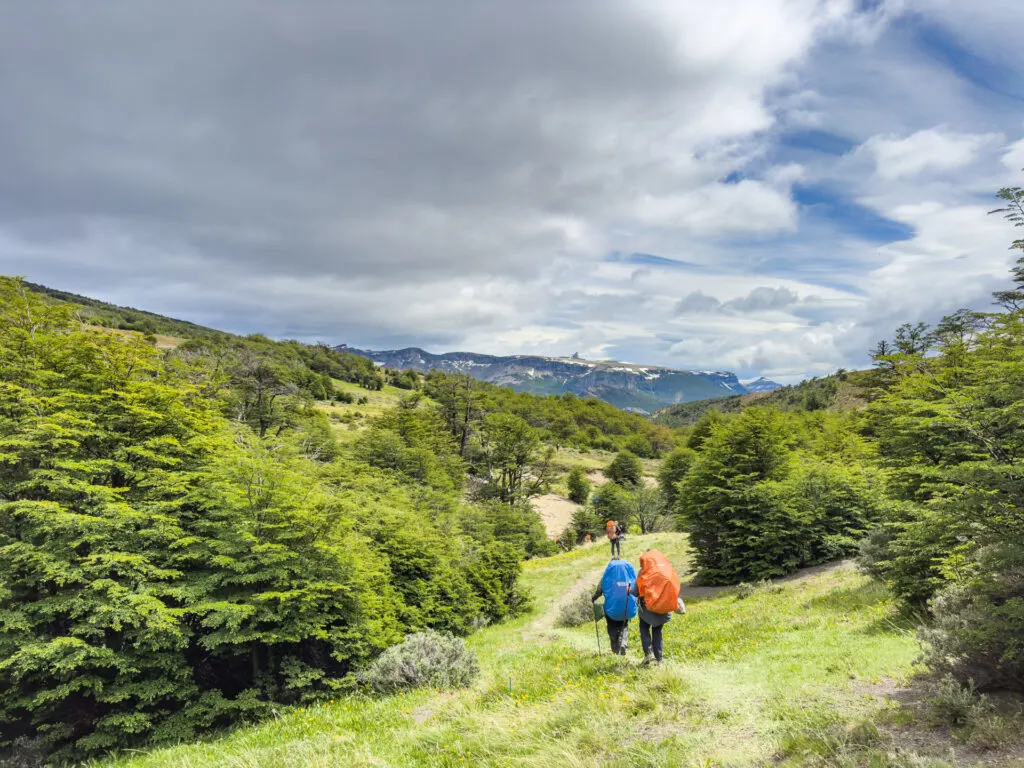
Group Hiking
As for trekking with so many other people, like many other Classics, there were two groups of about 200 people hiking at a time. One group that started their trek on, let’s say, Friday, and another group that started on Saturday. So about 400 people hiked the same route, but only 200 were at a campground each night.
And yes, I realize that sounds like a lot of people. It IS a lot of people. But it didn’t FEEL like a lot of people. Until, that is, you got to camp and tried to find a private place to go to the bathroom. It’s REALLY hard to find a good spot when there are that meany people and not a lot of woods. But more on how to deal with that in a minute.
If that sounds like too many people, if you only go backpacking to be alone in the wilderness and hate the sound of others laughing and sharing stories, well, then maybe the Classic isn’t for you ya old curmudgeon. But honestly, it was really easy both in Colorado and Chile to find plenty of space and time to hike alone and enjoy some peace and quiet. I spent hours each day with no one but myself and it was lovely.
Just as lovely? Hiking with others, swapping trail tales, and letting other people distract you from how tired and sore you are (or, in my case, how congested you are). There’s nothing like chatting mindlessly or weaving stories about your last adventure to take your mind off things. So basically, whether you like company or alone time, you can find plenty of it.
But the convivial atmosphere at camp and at checkpoints was delightful. Full of people sharing tips and tricks, learning how to fix clogged water filters, sharing pain killers, cooking and eating together, you name it. But still, you could be as conversational or reclusive as you wanted to be. I am an ambivert, so I love a good conversation around the campfire, but once the sun goes down, I like to chill in my tent to decompress and tend to my sore feet.
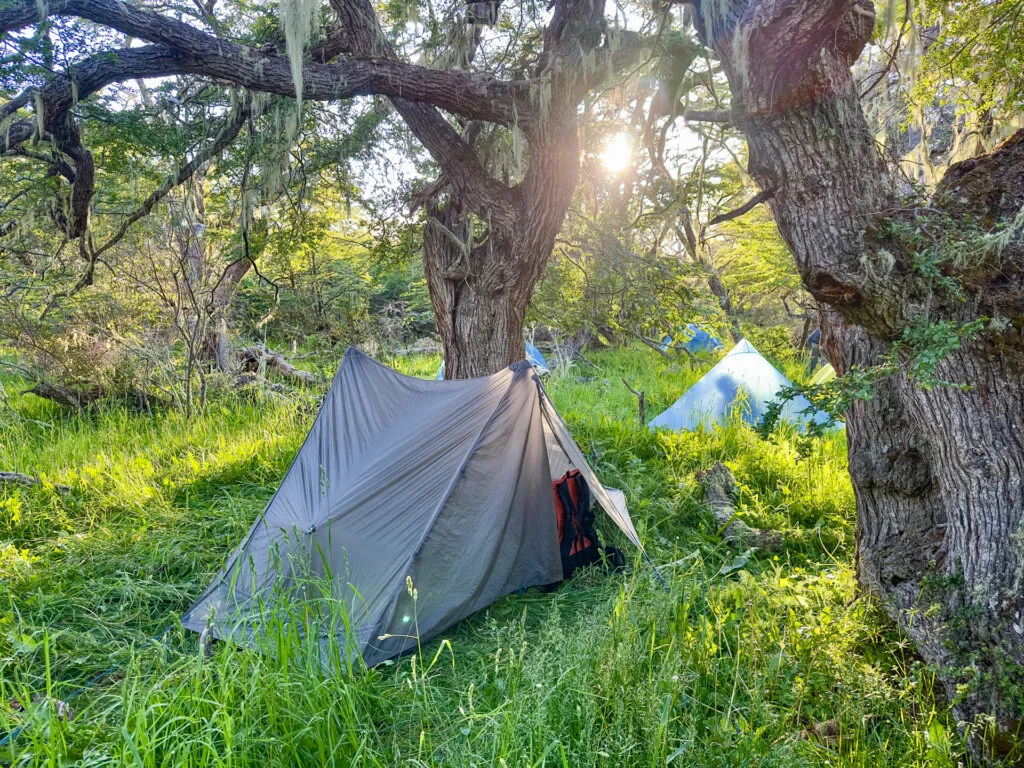
Camping
Camping is also in a group. In fact, you’ll camp with about 200 other people (but only about 2/3 as many tents). That means a few things: 1.) It’s hard to find a place to go to the bathroom (more on that below), 2.) If you’re a light sleeper you should bring ear plugs, 3.) Your tent WILL be close to others’ and 4.) The later you arrive at camp the trickier it will be to find a good spot (but never impossible).
That also means when you do pitch your tent, don’t spread out so much or pitch in the middle of an area that could fit multiple tents if you moved to the side.
As for toilets, all designated campgrounds had multiple trash bag toilets for use if you had to poo (buckets with a seat where you have to stretch your own trash bag across, poo in the bag, tie up the bag, then dispose of it in a nearby trash bin). But you weren’t supposed to pee in the bags ’cause that leaks more easily. So yes, it was a bit tricky to find a private spot if you had to pee. More tips on how to navigate that in the tips section below.
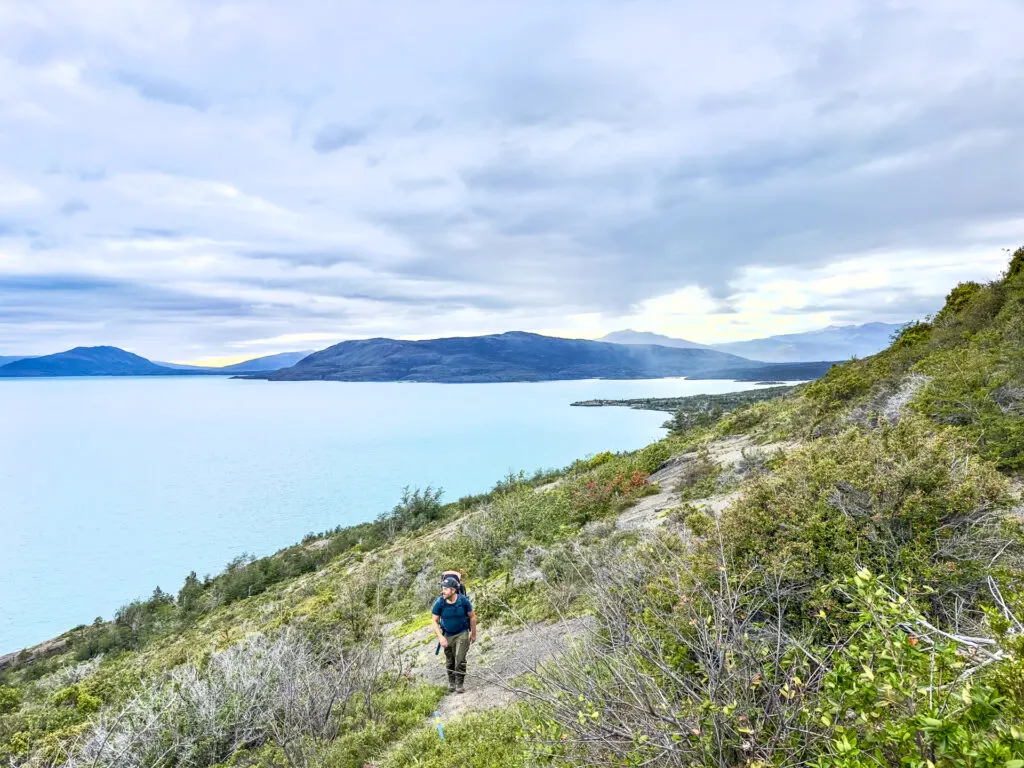
Scenery
The scenery was majestic, the trail is almost entire on private land so you won’t see many people out there who aren’t on the same trip as you, and it was spectacular how not only the views but the plant life changed from day to day. The trees were different, the flowers were different, we passed different lakes and witnessed different peaks. I would come around a corner and suddenly be staring at a whole different landscape. So pay attention and enjoy the variety, one of the most varied Classic landscapes, according to the Fjällräven team.
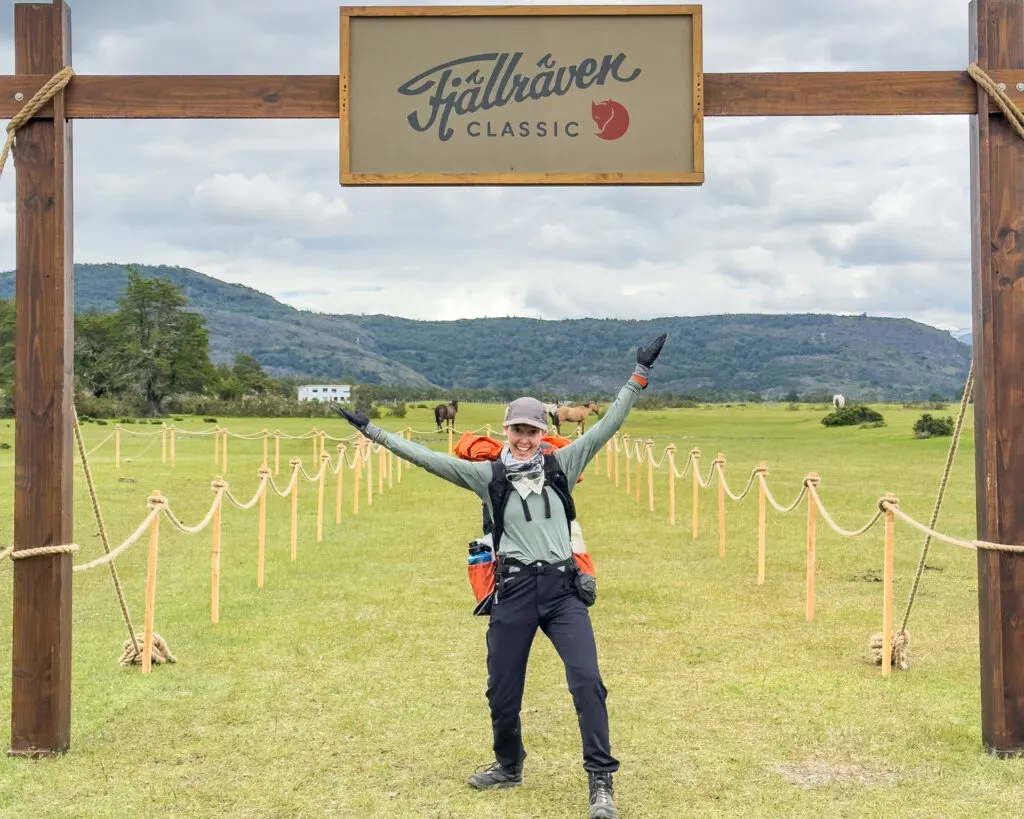
Who is the Fjällräven Classic For?
So I’ve said the Classic is for new AND experienced backpackers. How can that be? Well, if you have a pretty good handle on this backpacking thing, it’s easy to gear up, set off, and do your own thing, but you have the option of slowing down, enjoying the company of others, making new friends whether you came by yourself or with a friend, and enjoying the atmosphere of camaraderie. Also, it’s REALLY nice to just let someone else do all the planning sometimes, you know? No route finding required, no permits to apply for, no shuttles to arrange or research to be done. You just show up with your gear and start hiking and just enjoy the journey and the scenery. And if you forgot something or aren’t sure when the next water source will be, heck, just ask!
If you’re new to backpacking–plenty of people on every Classic are on their first ever backpacking trip–even more reason to sign up. Not only will you be surrounded by more experienced hikers who can show you the ropes if you want, but there’s plenty of opportunity to learn about how to plan your own trip now that you’ve experienced what’s required. It’s also a safer atmosphere. It’s almost impossible to get lost, there are checkpoints where you can rest, restock, and refuel, and there’s no question about whether you’ll find a good campsite. Plus, if you’re worried about backpacking solo, especially as a woman, fear not! There’s safety in these numbers, which makes it a great place to get an intro to backpacking. I even met a few people who said they only want to backpack this way because it’s fun, but also feels safe. And there’s something to be said for sleeping better because you’re not afraid what (or who) might be lurking in the bushes at night.
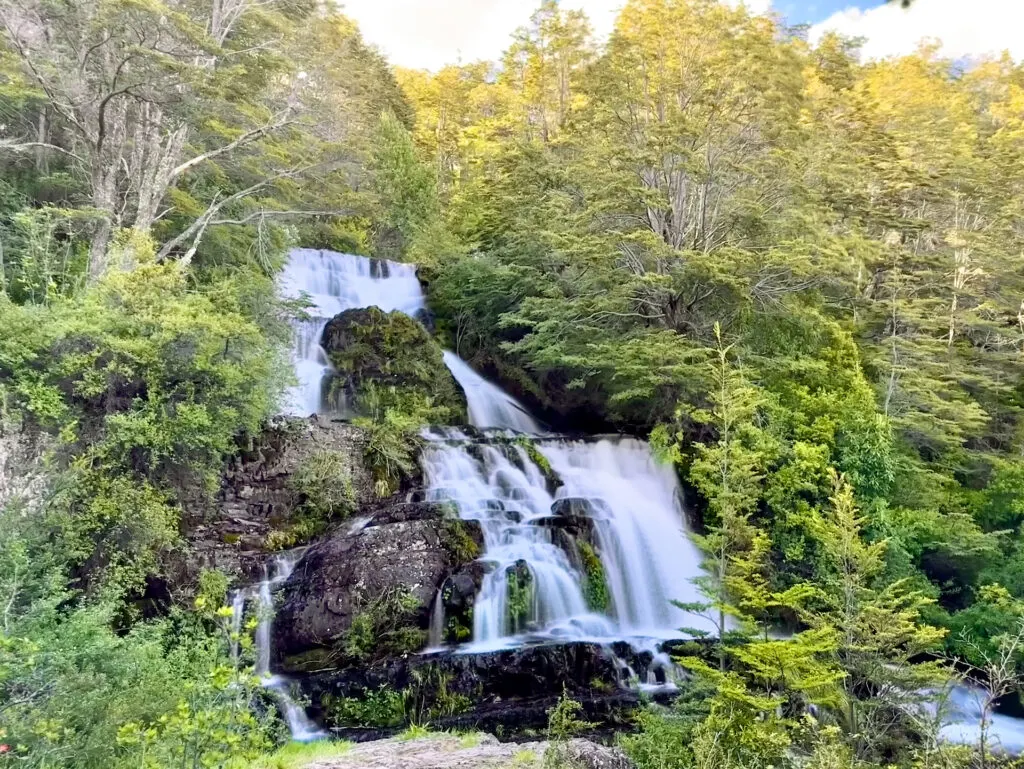
Tips for the Fjällräven Classic Chile
Think you might want to sign up? Here are a few more things you might want to know to prepare yourself.
- Going to the bathroom at camp is tricky. My advice, pee before you get to camp, then utilize every strategy for privacy, including, but not limited to: a lookout buddy, the cover of darkness, the semi-privacy of your tent vestibule, or a poncho. Women, I suggest the combo of Gnara Go There Pants and a pee funnel.
- Bring plenty of snacks. You’ll need lots of calories between meals.
- Pack Light. No, seriously. Pack reeeeeally light. You’re hiking up and down a lot. That pack is going to feel heavy real fast.
- Download an offline map. There’s a very simple map in your trekking passport with all the info about checkpoints, campgrounds, and daily mileage, which is very helpful, so keep that booklet handy. But It’s also nice to have a digital map and tracking device like a GPS watch so you know how far you have to go. I like to keep an eye on time and mileage so I know when to take a break or have another snack.
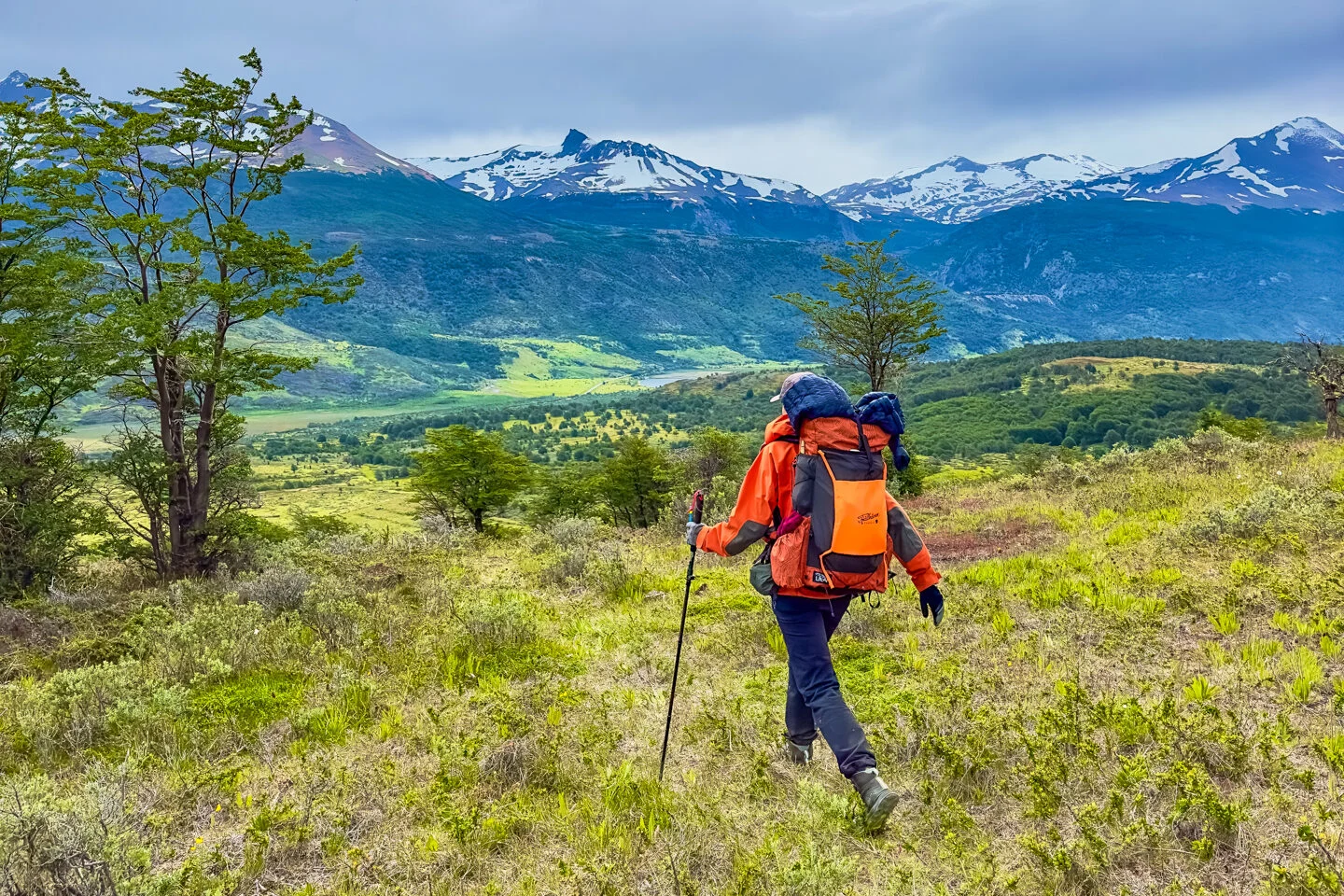
What Gear Do I Need?
As for what gear you need, here’s what I brought along and can recommend whole-heartedly:
- Ultralight Backpack: The heavier the backpack, the heavier your overall load. I carried the LiteAF Curve 40L because it’s not only durable and ultralight, but it’s water resistant. And it tends to rain A LOT in Patagonian summers.
- Tent: Obviously. I went with my Gossamer Gear The One.
- Trekking Poles. You’re gonna need them.
- Backpack Liner: Expect rain. Bring a bag liner or trash bag, just in case.
- Backpacking Stove: Any lightweight stove will do, but I love my MSR PocketRocket Deluxe.
- Eating Utensils, pot or kettle, and mug: You won’t need a bowl or skillet because all your meals are freeze-dried and can be eaten right out of the bag. But you will want a long-handled spoon, a pot or kettle for boiling water, and a mug if you plan to drink any hot beverages.
- Sleeping Bag and Sleeping Pad: I recommend an insulated sleeping pad and bag rated for 10º colder than the lows you’re expecting. I used a 30º bag and an insulated pad with an R-value of 5. I wish I’d had room to pack my folding Z-Rest pad, too, because in addition to offering more insulation while sleeping, it would have been a nice place to sit to keep my but warm and dry during breaks and meals and to stretch out at camp when there were too many thorny plants to risk setting out an inflatable pad.
- Rain Jacket: If it doesn’t rain on you at least one day, consider yourself lucky (we were). I packed a Fjällräven Bergtagen ECO-Shell. It’s heavier than my usual shell, but the promise of rain made it seem worth the extra grams.
- Hiking Pants: I was so glad I wore my Gnara Go There Pants with the specially-designed pee fly for women. It made going to the bathroom around that many people so fast and easy and I didn’t have to worry about exposing myself.
- Sun Shirt: You know we love sun shirts. They keep us from constantly having to reapply sunscreen. On this hike we wore the same Fjällräven Abisko Day Hike long sleeve shirt every day.
- Base layer: It can get chilly at night, so check the forecast before you go and consider bringing a cozy layer to sleep in and keep it dry no matter what.
- Cozy mid layer: In addition to a base layer, you’ll definitely want an insulated jacket and maybe one additional mid layer for cool nights or wet and windy days. I brought a Fjällräven Expedition Fleece and Fjällräven Expedition Latt Hooded jacket, both synthetic, which is better for rainy conditions.
- Hat: Any cap or sun hat will do. Bring a beanie for cool days, too.
- Water Filter: The locals may be OK drinking water straight from streams and lakes, but I don’t want to risk it. I brought a Sawyer water filter and a CNOC for filling and filtering.
- Headlamp: I’m actually not sure I used my headlamp once because I was in bed long before sunset and never woke before sunrise. But you wouldn’t catch me dead in the backcountry without one (or maybe that’s the only way you’d catch me…).
- Bathroom Kit: While there may have been toilets of a type at camps, there weren’t along the way. So bring a cat hole shovel and other bathroom supplies.
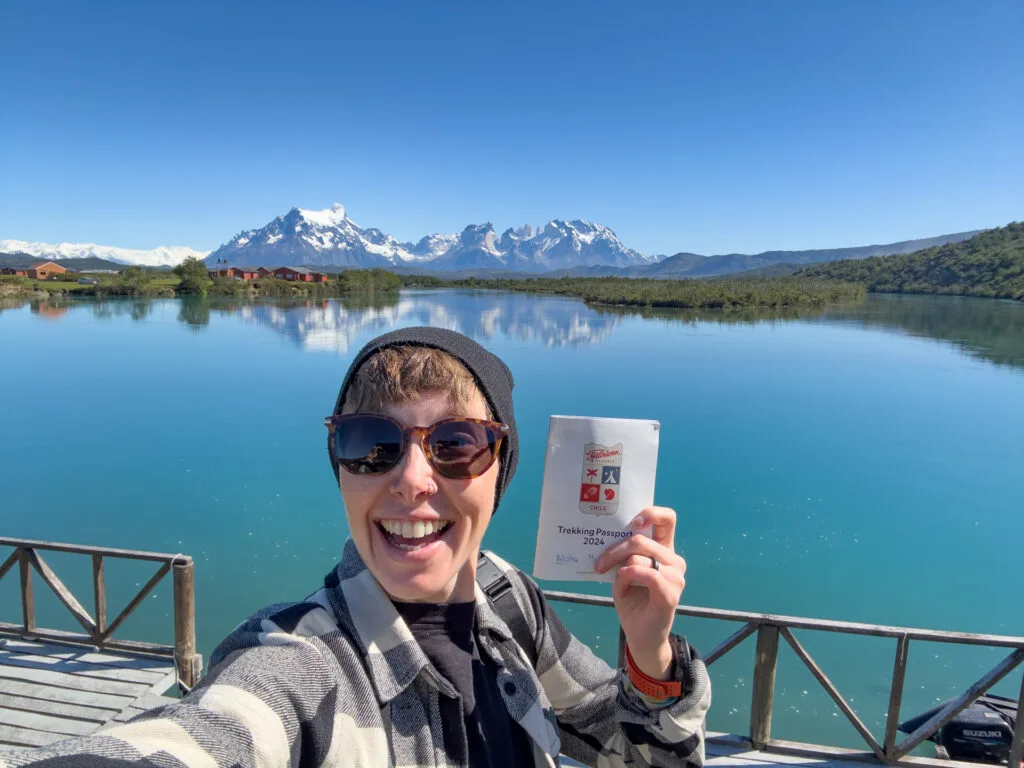
Bottom Line
The Fjällräven Classic Chile is a great way to experience Patagonia. I recommend staying a few extra days in Chile to acclimate to the new time zone and explore the region, maybe go to the national park (Torres del Paine)! If you want to make a real vacation of it, book a stay at Estancia Cerro Guido for a very comfortable off-the-beaten path stay complete with puma safaris so you can learn all about what the non-profit has done to protect the puma population in the region. Seeing one in the wild is super cool.
Then shoulder your pack, get ready for a challenge, make some friends, and enjoy the journey. Wander on.
Flying to the Fjällräven Classic? Check out our article on how to fly with backpacking gear, including what you can check and what you can carry on!
